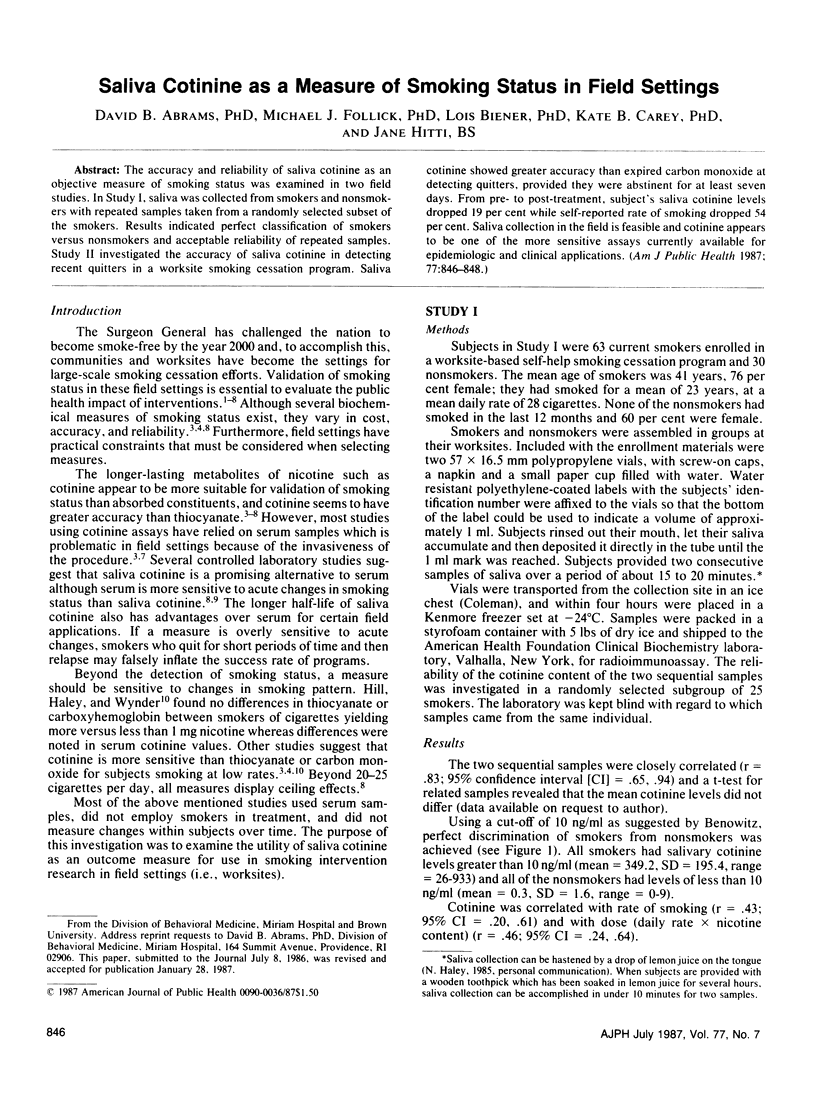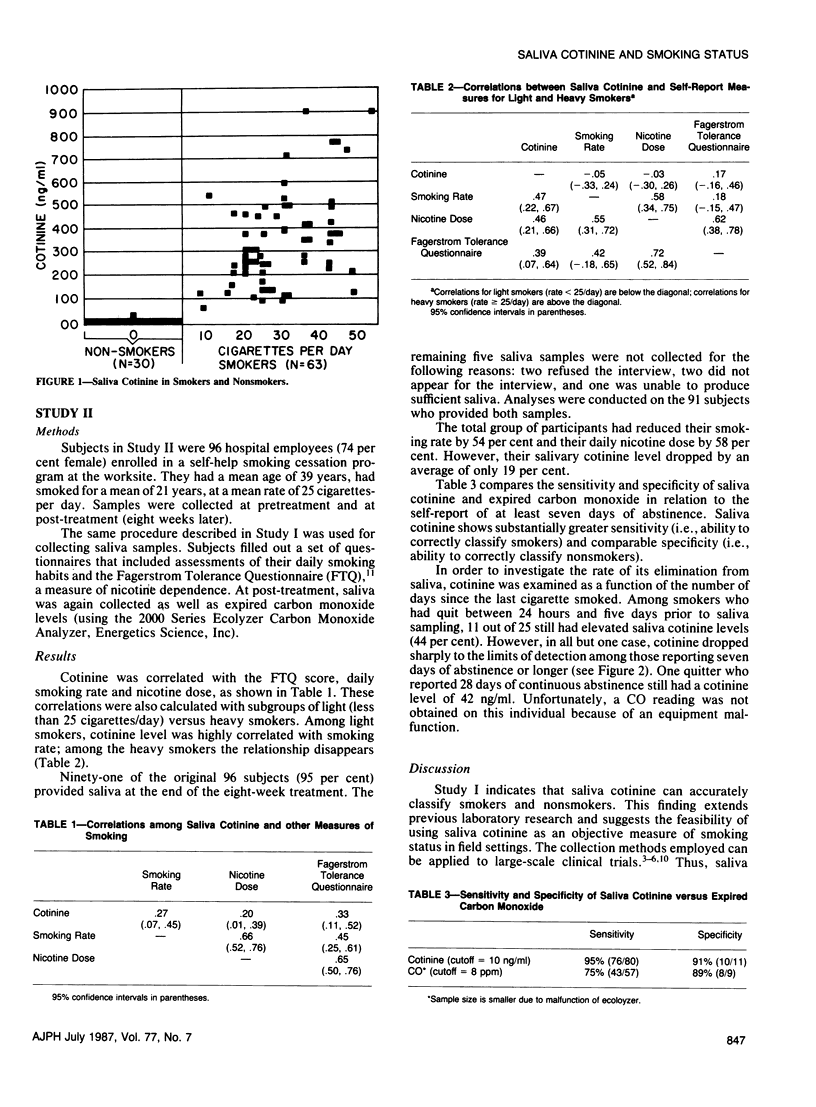Abstract
The accuracy and reliability of saliva cotinine as an objective measure of smoking status was examined in two field studies. In Study I, saliva was collected from smokers and nonsmokers with repeated samples taken from a randomly selected subset of the smokers. Results indicated perfect classification of smokers versus nonsmokers and acceptable reliability of repeated samples. Study II investigated the accuracy of saliva cotinine in detecting recent quitters in a worksite smoking cessation program. Saliva cotinine showed greater accuracy than expired carbon monoxide at detecting quitters, provided they were abstinent for at least seven days. From pre- to post-treatment, subject's saliva cotinine levels dropped 19 per cent while self-reported rate of smoking dropped 54 per cent. Saliva collection in the field is feasible and cotinine appears to be one of the more sensitive assays currently available for epidemiologic and clinical applications.
Full text
PDF


Selected References
These references are in PubMed. This may not be the complete list of references from this article.
- Fagerström K. O. Measuring degree of physical dependence to tobacco smoking with reference to individualization of treatment. Addict Behav. 1978;3(3-4):235–241. doi: 10.1016/0306-4603(78)90024-2. [DOI] [PubMed] [Google Scholar]
- Haley N. J., Axelrad C. M., Tilton K. A. Validation of self-reported smoking behavior: biochemical analyses of cotinine and thiocyanate. Am J Public Health. 1983 Oct;73(10):1204–1207. doi: 10.2105/ajph.73.10.1204. [DOI] [PMC free article] [PubMed] [Google Scholar]
- Hill P., Haley N. J., Wynder E. L. Cigarette smoking: carboxyhemoglobin, plasma nicotine, cotinine and thiocyanate vs self-reported smoking data and cardiovascular disease. J Chronic Dis. 1983;36(6):439–449. doi: 10.1016/0021-9681(83)90136-4. [DOI] [PubMed] [Google Scholar]
- Hunt W. A., Matarazzo J. D. Three years later: recent developments in the experimental modification of smoking behavior. J Abnorm Psychol. 1973 Apr;81(2):107–114. doi: 10.1037/h0034553. [DOI] [PubMed] [Google Scholar]
- Jacob P., 3rd, Wilson M., Benowitz N. L. Improved gas chromatographic method for the determination of nicotine and cotinine in biologic fluids. J Chromatogr. 1981 Jan 2;222(1):61–70. doi: 10.1016/s0378-4347(00)81033-6. [DOI] [PubMed] [Google Scholar]
- Langone J. J., Gjika H. B., Van Vunakis H. Nicotine and its metabolites. Radioimmunoassays for nicotine and cotinine. Biochemistry. 1973 Nov 20;12(24):5025–5030. doi: 10.1021/bi00748a032. [DOI] [PubMed] [Google Scholar]
- Lichtenstein E. The smoking problem: a behavioral perspective. J Consult Clin Psychol. 1982 Dec;50(6):804–819. doi: 10.1037//0022-006x.50.6.804. [DOI] [PubMed] [Google Scholar]
- Sepkovic D. W., Haley N. J. Biomedical applications of cotinine quantitation in smoking related research. Am J Public Health. 1985 Jun;75(6):663–665. doi: 10.2105/ajph.75.6.663. [DOI] [PMC free article] [PubMed] [Google Scholar]
- Stepney R. Consumption of cigarettes of reduced tar and nicotine delivery. Br J Addict. 1980 Mar;75(1):81–88. doi: 10.1111/j.1360-0443.1980.tb00198.x. [DOI] [PubMed] [Google Scholar]
- Zeidenberg P., jaffe J. H., Kanzler M., Levitt M. D., Langone J. J., Van Vunakis H. Nicotine: cotinine levels in blood during cessation of smoking. Compr Psychiatry. 1977 Jan-Feb;18(1):92–101. doi: 10.1016/s0010-440x(77)80012-6. [DOI] [PubMed] [Google Scholar]


